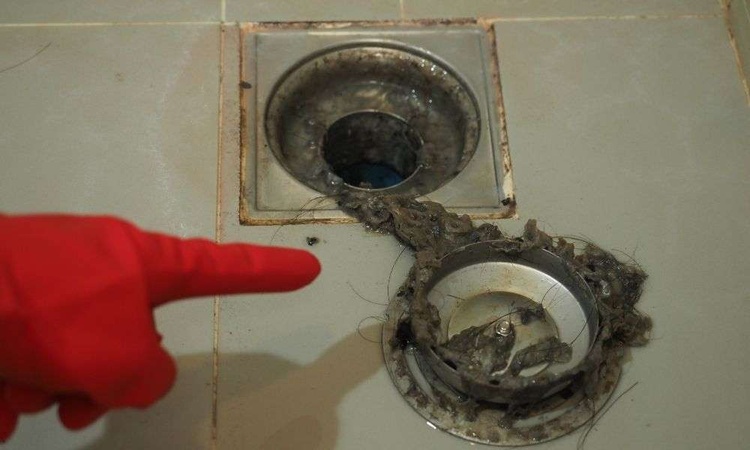Safe Disinfecting Practices for Bathroom and Kitchen Tile Seams
A practical guide to safely disinfecting tile seams in bathrooms and kitchens, focusing on techniques that control mildew and biofilm without damaging porcelain or ceramic tiles. Learn how sealers, moisture control, and appropriate tools support long-term maintenance and stain prevention.

Tile seams — the thin lines of grout between porcelain or ceramic tiles — are common sites for mildew, biofilm, and staining. Proper disinfection reduces microbial buildup but must be balanced with gentle restoration and ongoing maintenance to avoid damage or accelerated wear. This article outlines safe disinfection practices, compatible products, and preventive steps to keep bathroom and kitchen tile seams sanitary and durable.
This article is for informational purposes only and should not be considered medical advice. Please consult a qualified healthcare professional for personalized guidance and treatment.
How do mildew and biofilm form in tile seams?
Mildew and biofilm develop where moisture, organic material, and limited airflow meet — conditions often present in shower surrounds, sink backsplashes, and kitchen countertops. Porous grout can trap water and nutrients, allowing microscopic communities to attach and produce discoloration and odors. Efflorescence, a mineral deposit from migrating salts, is distinct from biological growth but can coexist with stains and make cleaning more difficult. Identifying whether a seam issue is microbial or mineral-based guides the right tools and techniques for restoration.
What disinfection techniques are safe for grout?
Choose disinfectants and dilution levels compatible with grout and adjacent tile—strong acids or undiluted bleach can erode cement-based grout and harm some sealants. Common safe approaches include using an EPA-registered disinfectant following label instructions, oxygen-based cleaners for gentle oxidation of organic stains, or diluted household bleach solutions (properly ventilated and rinsed) for short-contact treatments on resistant mildew. Always test a small, inconspicuous area first on porcelain and ceramic, wear gloves and eye protection, and ensure good ventilation to limit inhalation exposure.
How to remove stains, efflorescence and discoloration
Stains from soil, rust, or organic growth often respond to targeted cleaning before disinfection. For efflorescence, dry brushing and pH-neutral cleaners can remove surface salts; acidic treatments work but risk damaging grout if misused. For organic stains and mildew, use enzymatic or oxygen-based cleaners and mechanical agitation with nylon brushes—avoid metal scrapers that scratch glazed tile. Restoration may require repeating cycles of cleaning and rinsing, and in stubborn cases, grout replacement or professional restoration ensures a lasting finish without harming surrounding porcelain or ceramic.
Choosing sealants and sealers for porcelain and ceramic tiles
A quality sealer or sealant helps limit moisture penetration and biofilm formation in cementitious grout. Penetrating sealers are common for grout — they absorb into the joint and allow vapor to pass while repelling liquid. Surface sealants form a coating and can alter slip resistance or appearance; compatibility with porcelain and ceramic glazes matters. Apply sealers only to fully cured and clean grout, and follow manufacturer cure times. Regularly inspect sealant condition as part of maintenance, and reapply according to product directions to maintain moisture defense.
Tools and techniques for grout restoration and maintenance
Effective tools include soft-bristled brushes, grout-specific cleaners, microfibre cloths, and small extraction vacuums for rinsing. For deeper restoration, oscillating grout-cleaning attachments or steam cleaners designed for tile can help, but check that heat or pressure won’t damage tiles or sealants. Manual methods often provide more control: scrubbing with nylon brushes and rinsing thoroughly reduces residue that can feed biofilms. Keep cleaning tools dedicated to tile work to avoid cross-contamination with other household areas.
Preventing moisture, recurrence of stains, and long-term maintenance
Control of moisture is the most reliable prevention: improve ventilation, run exhaust fans, squeegee shower walls after use, and repair leaks promptly. Regular cleaning schedules that alternate mild detergent washes with periodic disinfection reduce biofilm buildup before it deepens into staining. Monitor for efflorescence after plumbing repairs or new work, as migrating salts can indicate underlying moisture issues. For tiled kitchens and bathrooms consider local services for periodic professional inspections if persistent problems occur, especially in older installations where grout has deteriorated.
Conclusion
Safe disinfection of tile seams balances effective microbial control with preservation of grout and tile materials. Identify whether issues are biological or mineral-based, select compatible disinfectants and sealers for porcelain and ceramic surfaces, and use appropriate tools and techniques for cleaning and restoration. Consistent moisture management and maintenance extend the lifespan of grout and reduce the need for invasive repairs.





